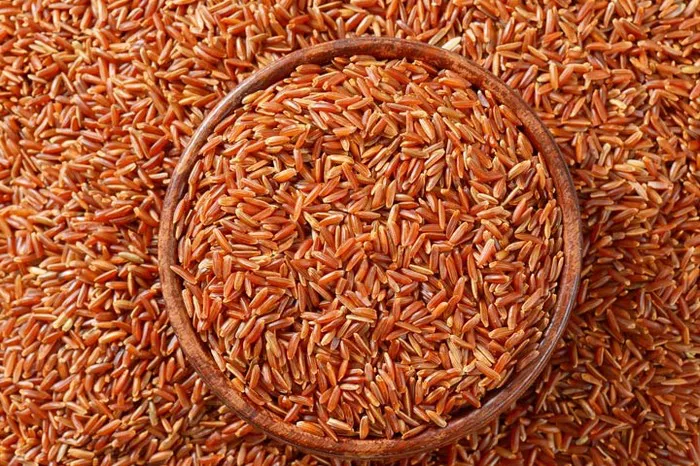White rice is a staple food in many cultures and a common component of various diets. However, its role in weight loss is often debated. Some argue that white rice contributes to weight gain, while others believe it can be part of a healthy weight loss plan when consumed in moderation. This article explores the nutritional aspects of white rice and its potential impact on weight loss, along with practical recommendations for incorporating it into a balanced diet.
SEE ALSO: What Healthy Carbs Can I Eat
Nutritional Breakdown of White Rice
White rice is primarily composed of carbohydrates, with minimal amounts of protein and fat. Here’s a closer look at its nutritional profile:
Calories: A cup of cooked white rice contains about 200 calories, making it a moderate source of energy.
Carbohydrates: White rice is high in carbohydrates, with around 45 grams per cup. These carbs are mostly starches, which are broken down into glucose during digestion.
Protein: White rice provides about 4 grams of protein per cup. While it’s not a significant protein source, it can still contribute to daily protein intake.
Fat: White rice is very low in fat, with less than 1 gram per cup.
Glycemic Index (GI): White rice has a high GI, typically ranging from 70 to 90, depending on the variety. This means it can cause a rapid spike in blood sugar levels after consumption.
Essential Nutrients: White rice contains small amounts of vitamins and minerals, including B vitamins (like thiamine and niacin), iron, and magnesium. However, it lacks the fiber and higher nutrient content found in whole grains like brown rice.
Comparing White Rice to Brown Rice and Other Grains
Brown rice, in contrast to white rice, retains its bran and germ layers, making it a whole grain. This gives brown rice a higher fiber content, which aids digestion and can help with weight management. It also has a lower GI, which means it causes a slower, more gradual rise in blood sugar levels. Other grains like quinoa, oats, and barley also offer higher nutritional value, including more protein, fiber, and a broader range of vitamins and minerals.
Impact of White Rice on Weight Loss
When considering white rice in the context of weight loss, it’s essential to understand the role of carbohydrates and calorie intake:
Carbohydrates and Calorie Intake: Carbohydrates are a primary energy source for the body, but consuming them in excess can lead to weight gain, as unused carbs are stored as fat. White rice, being high in carbs, can contribute to a higher calorie intake if not portioned properly.
Glycemic Index and Blood Sugar: The high GI of white rice can cause rapid blood sugar spikes, leading to fluctuations in energy levels and hunger. This can result in overeating, particularly if the rice is not paired with foods that slow digestion, such as proteins and fats.
Potential for Weight Gain or Loss: Whether white rice contributes to weight gain or loss depends largely on portion size and how it’s integrated into the overall diet. While it can be part of a weight loss plan, overconsumption without considering total calorie intake may lead to weight gain.
Potential Downsides
Relying exclusively on white rice as a carbohydrate source might not be the most effective strategy for weight loss. Its low fiber content can lead to less satiety, causing hunger to return sooner after meals.Moreover, a diet high in refined carbs like white rice may increase the risk of metabolic issues and hinder weight loss efforts.
Recommendations for Incorporating White Rice into a Weight Loss Plan
White rice can still be included in a weight loss plan if approached mindfully:
Portion Control Strategies: Limit portion sizes to about ½ to 1 cup per meal, which keeps calorie intake in check while allowing you to enjoy rice.
Pairing with Nutrient-Dense Foods: Combine white rice with protein-rich foods (like chicken, fish, or tofu) and plenty of vegetables. This not only balances the meal but also helps slow digestion and prolongs fullness.
Healthy Cooking Methods: Opt for boiling or steaming white rice without adding butter or oil, which keeps it low in fat and calories.
Balanced Diet and Regular Exercise: Ensure that white rice is part of a balanced diet that includes a variety of whole grains, lean proteins, healthy fats, and plenty of fruits and vegetables. Regular exercise is also crucial for effective weight loss and overall health.
Alternative Grains and Weight Loss Options
If you’re looking to diversify your diet, consider incorporating other whole grains that may be more beneficial for weight loss:
Brown Rice: With more fiber and a lower GI, brown rice is a more nutrient-dense option that can help regulate blood sugar levels and promote satiety.
Quinoa: This pseudo-grain is high in protein and fiber, making it a great alternative to white rice for those looking to lose weight.
Oats: Rich in soluble fiber, oats can help reduce hunger andcontrol blood sugar levels, making them an excellent choice for weight management.
Other Dietary Strategies: Besides swapping grains, focusing on a diet rich in vegetables, lean proteins, and healthy fats can support weight loss. Additionally, controlling portion sizes and being mindful of overall calorie intake are key strategies.
Conclusion
White boiled rice can be part of a weight loss diet when consumed in moderation and balanced with other nutrient-dense foods. While it provides energy and some essential nutrients, its high glycemic index and low fiber content may pose challenges for those trying to lose weight. By practicing portion control, pairing it with proteins and vegetables, and considering alternative grains, white rice can fit into a healthy, balanced diet that supports weight loss goals.
Related Topics:



























